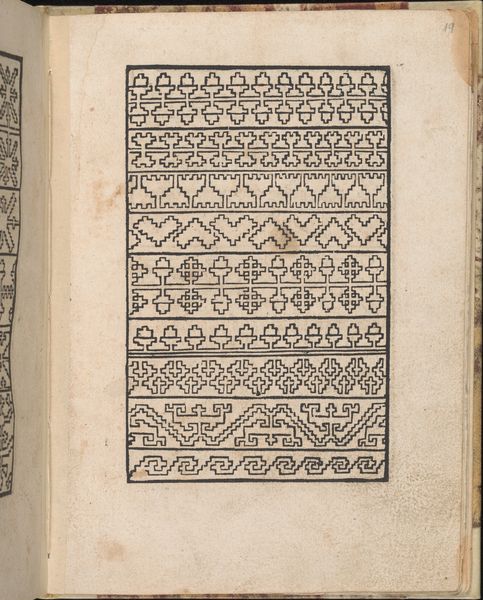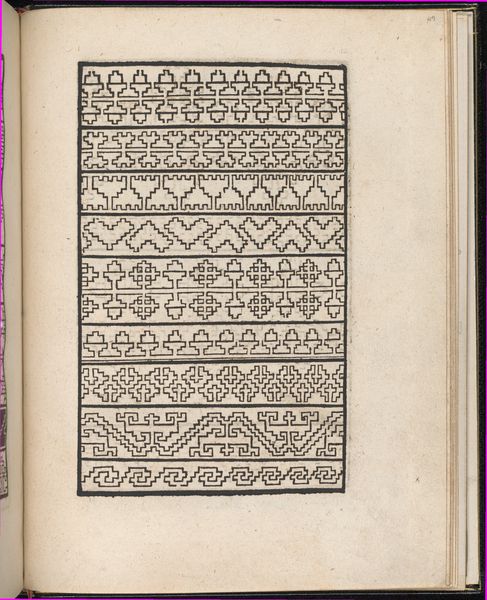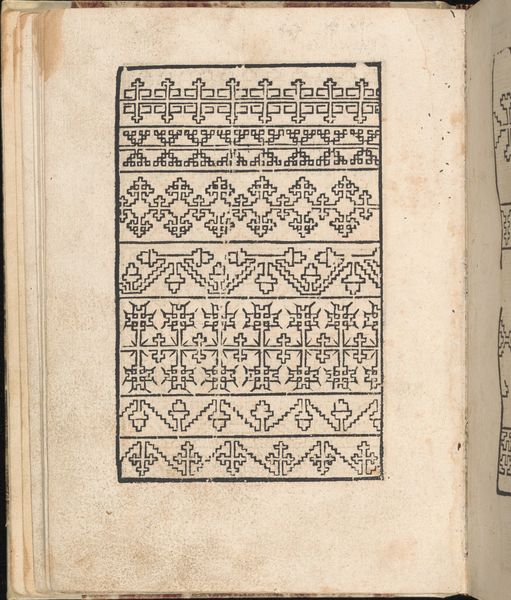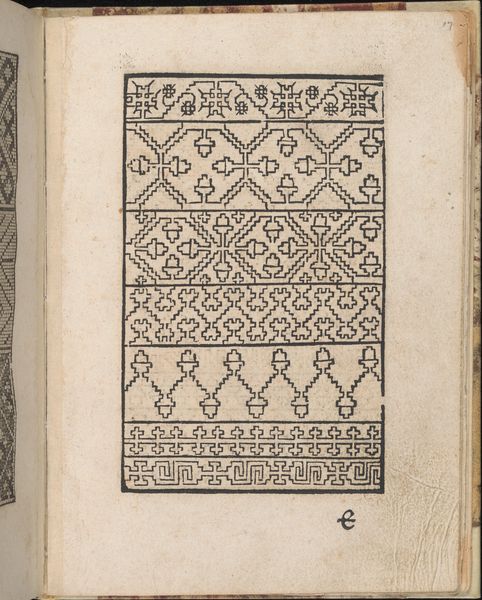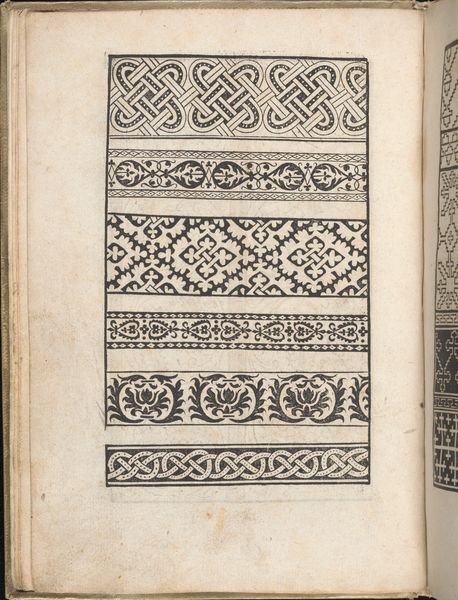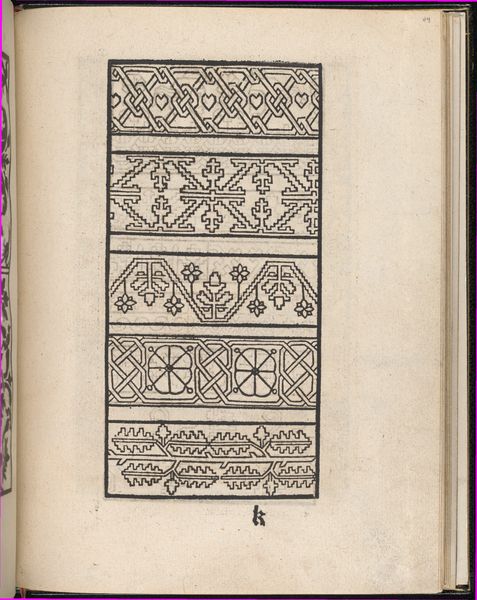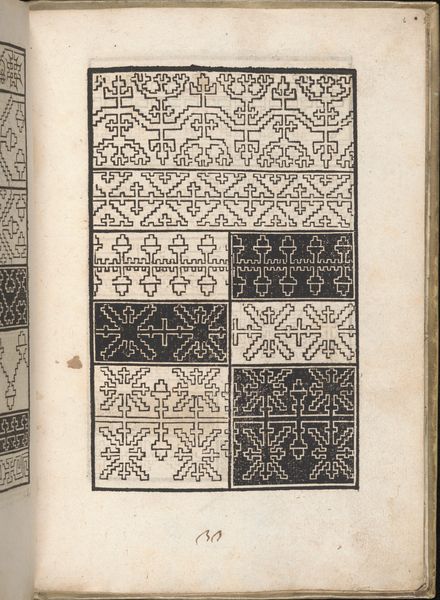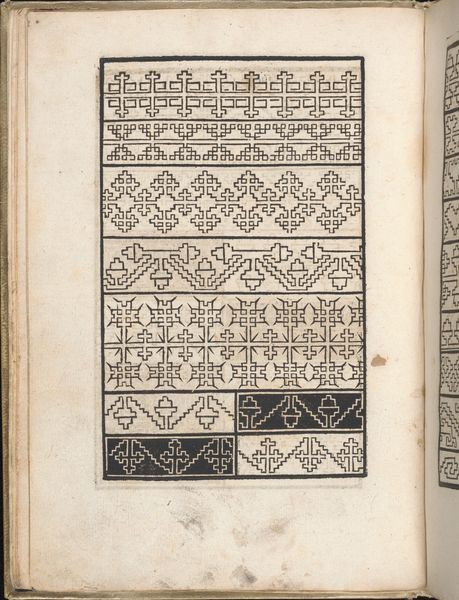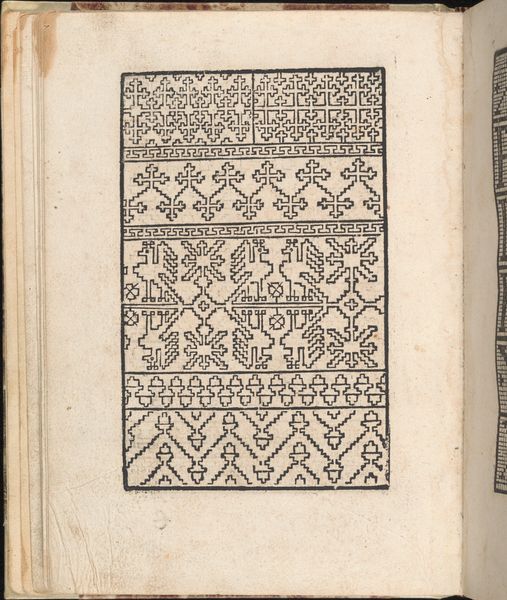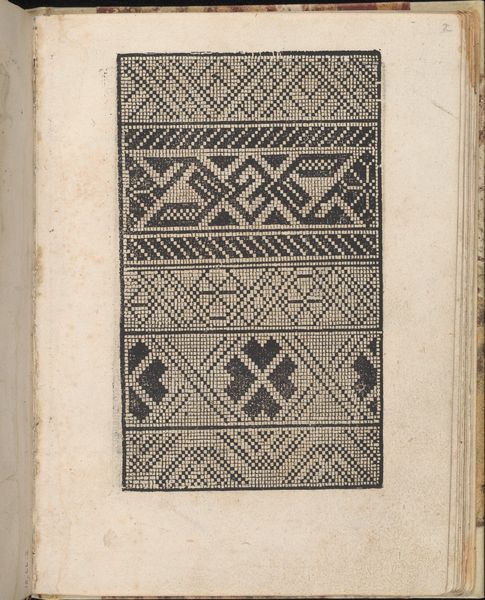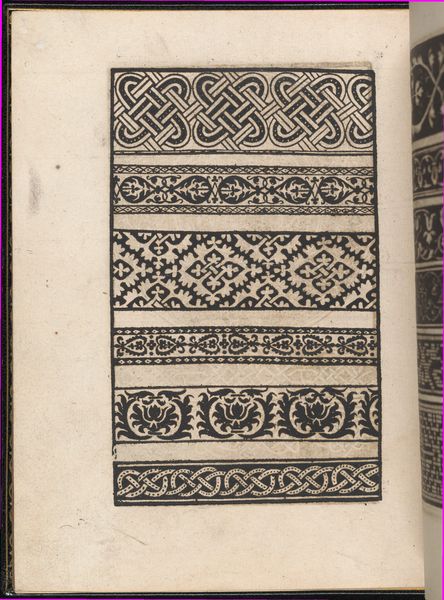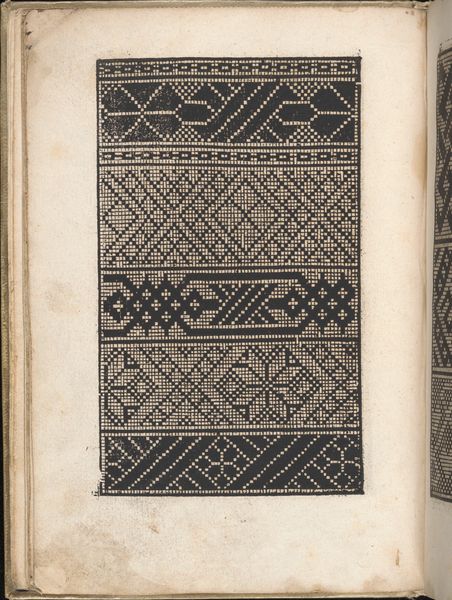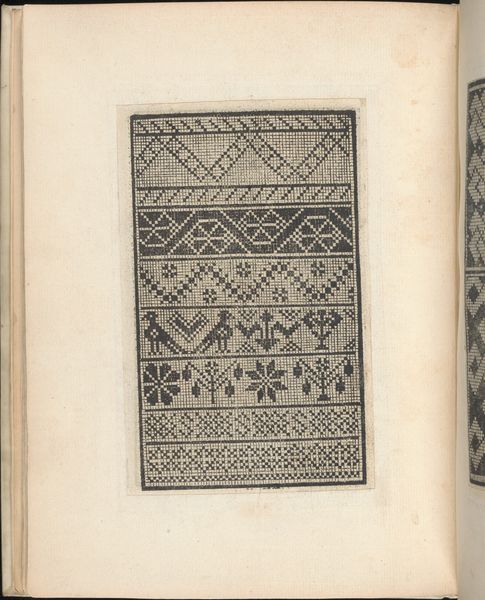
drawing, graphic-art, print, woodcut
#
drawing
#
graphic-art
# print
#
geometric
#
woodcut
#
northern-renaissance
Dimensions: Overall: 7 7/8 x 5 1/2 in. (20 x 14 cm)
Copyright: Public Domain
Editor: So, here we have a page, specifically page 8r, from "Eyn new kunstlich boich" by Peter Quentel, created in 1529. It's a woodcut print, and I’m struck by how methodical it seems; it’s all these very precise, geometric patterns stacked on top of each other. What’s your take on this kind of art? Curator: It's fascinating to consider this from a materialist perspective. These aren't just abstract shapes, but rather the direct result of labor. A craftsman meticulously carving wood to produce these repeating patterns. This challenges a separation of fine art and craft. These repeating pattern-books served the textile industry for mass production, didn't they? Editor: That's right. They were design templates! Curator: Exactly. We can look at this as an early form of industrial design. Quentel's role was to provide a resource for the textile industry, streamlining the process of creation and responding to consumer demands of the era. Consider the impact on social structures, labor practices, and even international trade? It all stems from the artist selecting a specific material and carefully controlling the making. It's not so divorced from a conceptual art practice as you might think. Editor: I guess I never thought about it like that! The artist's decisions about production having these huge ramifications. I was stuck on just the visuals themselves. Curator: It highlights how crucial the artist is in shaping visual culture. These designs would proliferate, becoming deeply ingrained in people's daily lives through textiles. Even those geometric shapes became social commodities, available to many because of printmaking. Editor: That makes you wonder about copyright. Whose patterns did he borrow, or adapt? What are the labor dynamics implicit in that artistic production? Thanks for shifting my view! Curator: Glad to offer a different lens! By looking closely at the material, we start to understand it in relationship to power structures and economic relationships of that historical time.
Comments
No comments
Be the first to comment and join the conversation on the ultimate creative platform.
